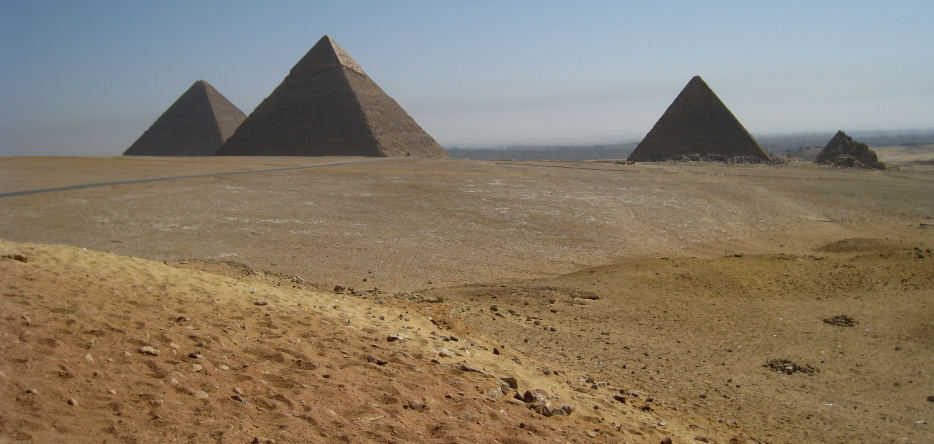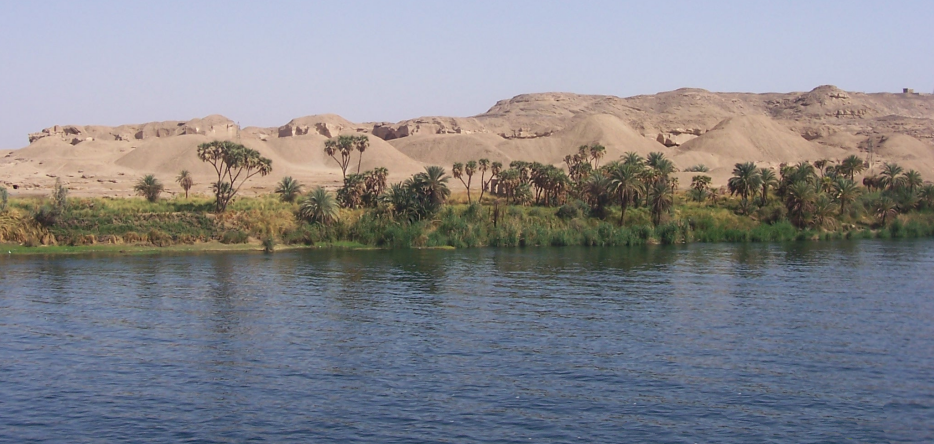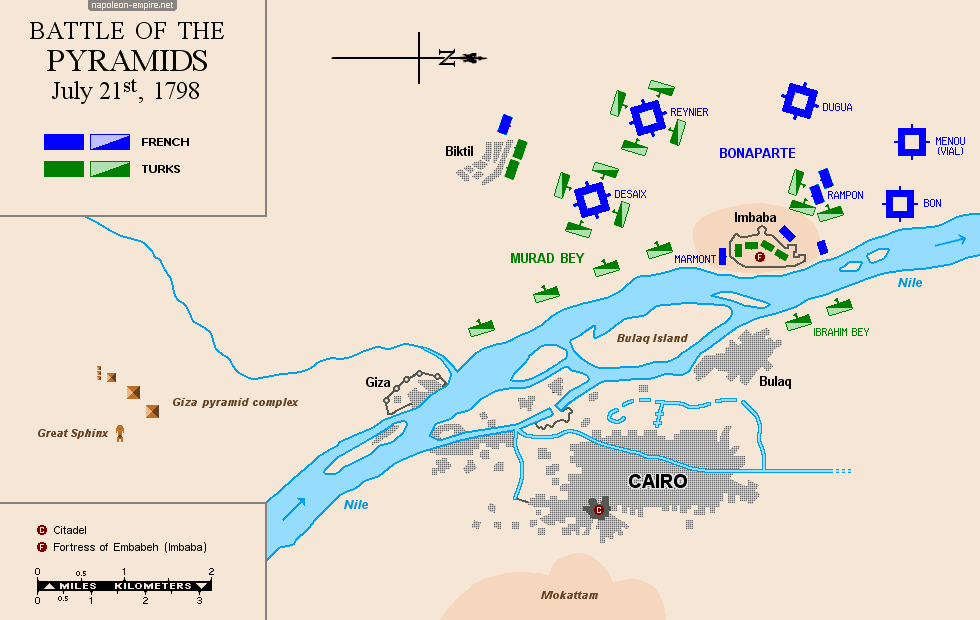Date and place
- July 21, 1798 (3 Thermidor Year VI) at Embabeh or Imbaba on the Giza plateau, near the three great pyramids of Giza, on the left bank of the Nile (nowadays in the metropolis of Cairo, Egypt).
Involved forces
- French Army of the East (20,000 to 30,000 men according to sources) commanded by General Napoleon Bonaparte.
- 40,000 Egyptian-Turks, Janissaries and Mamluks under the command of Murad Bey, on behalf of the Ottoman Empire.
Casualties and losses
- French army of the Orient: c. 40 dead, 300 wounded.
- Turkish army: 10,000 dead (including 7,000 Mamluks), 40 guns (according to Bonaparte).
This major battle, during the French Invasion of Egypt, saw the French army under Napoleon Bonaparte win a decisive victory against the Egyptian army.
Overall situation
After disembarking near Alexandria [الإسكندرية], on July 1, 1798, Napoleon Bonaparte quickly took the city and then almost immediately set off for Cairo [القاهرة], the key city of Egypt, whose possession would give him control of the country.
On the way, on the 14th, he inflicted on the Mamelukes a first defeat during the Chebreiss (or Shubra Khit) [شبراخيت] fight. The vanquished retreated to their capital, where they chose to wait for the invader and confront him with all their forces in a decisive battle.
Enemy’s positions
Murad Bey (مراد بك) had approximately 40,000 men, including 12,000 Mamelukes, 8,000 Arabian horsemen and an infantry of some 20,000 janissaries. Present at Shubra Khit where he saw his troops outclassed by the French, the Egyptian general this time overcame his contempt for the enemy and made serious preparations:
- the left bank of the Nile [نهر النيل], where the enemy would be presenting, got fortified;
- the village of Embabeh [إمبابة] (or Imbaba) [30.08157, 31.19508], located between the river and the Pyramids of Giza [مجمع أهرامات الجيزة] and on which was leaning the right of his camp, got surrounded by a trench protected by 30 guns on fixed carriages
Thus transformed into a redoubt, the village was defended by his infantry; the cavalry covered the desert from there to the pyramids. Plus, a reserve, commanded by Ibrahim Bey (إبراهيم بك) , remained on the right bank, near Cairo.
The French, numbering about 30,000, arrived in sight of the enemy on July 21 at daybreak. They discovered the breathtaking spectacle of the Sphinx , the largest monolithic monumental sculpture in the world, and the gigantic pyramids
(the pyramid complex of Giza, including the great pyramid of Cheops, the only one of the seven wonders of the ancient world still standing), gilded by the morning sun:

Napoleon Bonaparte harangued his soldiers. The famous Soldiers, from the top of these pyramids forty centuries contemplate you
is perhaps apocryphal (it is in the Mémoires of General Gaspard Gourgaud, published in 1823, that this sentence is mentioned, but he was obviously not present, since he was less than fifteen years old at the time of the battle); however, it well summarizes the adequacy between the prestigious historical setting and the importance that the upcoming battle will have.
Without being bewildered by the beauty of the site, Bonaparte arranged his troops in squares by division, a tactic used during the fight of Shubra Khit and which gave excellent results. The sides of these squares were six rows of depth at the front and at the back, three on the lateral sides; at the angles stood the artillery; the center welcomed luggage and generals.
These formations enjoyed a great mobility and their configuration put them in a position to face an assault from whichever direction. They could also detach the first three rows of their front and rear faces in a leading column, the rest then serving the latter support or as a fallback position.
The fights
On the left were the divisions of Jacques de Menou de Boussay and Louis-André Bon ; in the center the division of Charles-François-Joseph Dugua ; on the right, those of Louis Charles Antoine Desaix and Jean-Louis-Ébénézer Reynier . They were ordered to open fire only at close range.
Bonaparte advanced with the Dugua division. His observations having revealed to him that the cannons of Embabeh could not be moved and that the Mamluk cavalry was out of their reach, he decided to concentrate his first efforts on his side. Once it would be repulsed, he could cut the way of retreat of the enemy, turn on the redoubt of Imbaba and destroy it.
Murad Bey tried to rev him up by commanding his riders to charge before the squares had finished forming. He launched 8,000 Mamluks on the French right. Too late! The Desaix division had just finished putting itself in position when it received the shock of the attackers. They were greeted by a destructive fire that threw mounts and riders to the ground. The attackers, however, showed such impetuosity that they barely failed to break the front of the French division.
Their ranks broken, the Mamelukes continued for some time to sacrifice themselves unnecessarily in disordered and sterile loads then fell back on the left French wing where Bon and Menou were waiting for them. In doing so, they offered their backs to the blows of the Dugua division which put them in rout.
Witnessing this fiasco disturbed the defenders of Imbaba. Bonaparte noticed this and sent his left wing to take possession of the village. The two squares advanced then detached into two columns of attack, under the orders of Antoine-Guillaume Rampon and Louis Viesse de Marmont, who started assaulting the entrenchments.
The Mamluks who were there, came out to meet them, but in while doing so encountered the "living citadels" formed by the two formations that immediately organized into squares, with remarkable composure. Riders charged three times before becoming aware of the futility of their efforts. They hesitated for a moment then turned around and escaped.
The Imbaba garrison then attempted to escape and to join Murad Bey. Doing so, it offered its flank to the French infantry who shot it. Panic settled in the Ottoman ranks and this was the final defeat.
Murad Bey, himself wounded, withdrew towards the south with the remaining 3,000 horsemen. Ibrahim, who cautiously kept himself safe from the river during the battle, collected the fugitives who had crossed the Nile swimming and then took the road to Syria [سوريا].

The aftermath of the battle
Egypt was conquered. The French army had left less than 400 combatants on the ground counting killed and wounded; enemy losses may have reach or even exceed the tens of thousands (the sources are extremely divergent).
Bonaparte advanced his troops to Giza [الجيزة] and set up his headquarters in Murad Bey palace .
Map of the battle of the Pyramids (Battle of Embabeh)

Picture - "The Battle of the Pyramids". Painted 1806 by Louis François Lejeune.

It is Napoleon Bonaparte himself who chose to give this fight the name of "Battle of the Pyramids". This name seemed to him more prestigious than those of "Battle of Cairo", or "Embabeh", geographically more relevant, for which he could have also opted.
Photos Credits
Photos by Lionel A. Bouchon.Photos by Marie-Albe Grau.
Photos by Floriane Grau.
Photos by Michèle Grau-Ghelardi.
Photos by Didier Grau.
Photos made by people outside the Napoleon & Empire association.